Diverse neurotoxicants converge on gene expression for neuropeptides and their receptors in an in vitro model of neurodifferentiation: effects of chlorpyrifos, diazinon, dieldrin and divalent nickel in PC12 cells
- PMID: 20682304
- PMCID: PMC2933311
- DOI: 10.1016/j.brainres.2010.07.073
Diverse neurotoxicants converge on gene expression for neuropeptides and their receptors in an in vitro model of neurodifferentiation: effects of chlorpyrifos, diazinon, dieldrin and divalent nickel in PC12 cells
Abstract
Unrelated developmental neurotoxicants can produce similar neurobehavioral outcomes. We examined whether disparate agents affect neuromodulators that control numerous neurotransmitters and circuits, employing PC12 cells to explore the targeting of neuroactive peptides by organophosphates (chlorpyrifos, diazinon), an organochlorine (dieldrin) and a metal (Ni(2+)); we utilized microarrays to profile gene expression for the peptides and their receptors. Chlorpyrifos evoked robust upregulation of cholecystokinin, corticotropin releasing hormone, galanin, neuropeptide Y, neurotensin, preproenkephalin and tachykinin 1; this involved a critical period at the commencement of neurodifferentiation, since the effects were much less notable in undifferentiated PC12 cells. Diazinon targeted a similar but smaller repertoire of neuropeptide genes and the magnitude of the effects was also generally less. Surprisingly, dieldrin shared many of the same neuropeptide targets as the organophosphates and concordance analysis showed significant overlap among all three pesticides. However, dieldrin had more notable effects on neuropeptide receptors, and overlap between diazinon and dieldrin for the receptors led to a stronger resemblance of these two agents than of chlorpyrifos and dieldrin. Ni(2+) was unique, evoking upregulation of only one of the peptides affected by the other agents, while causing downregulation of several others. Nevertheless, there was still significant concordance between Ni(2+) and either diazinon or dieldrin, reflecting similarities toward the receptors. Our results show that neuropeptides are likely to be a prominent target for the developmental neurotoxicity of organophosphates and other neurotoxicants, and further, that the convergence of disparate agents on the same genes and pathways may contribute to similar neurobehavioral outcomes.
Copyright 2010 Elsevier B.V. All rights reserved.
Conflict of interest statement
Figures
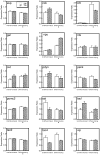

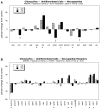

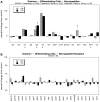

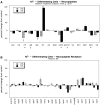

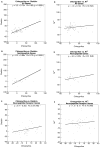
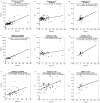
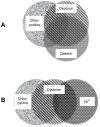
Similar articles
-
Oxidative and excitatory mechanisms of developmental neurotoxicity: transcriptional profiles for chlorpyrifos, diazinon, dieldrin, and divalent nickel in PC12 cells.Environ Health Perspect. 2009 Apr;117(4):587-96. doi: 10.1289/ehp.0800251. Epub 2008 Dec 5. Environ Health Perspect. 2009. PMID: 19440498 Free PMC article.
-
Developmental neurotoxicants target neurodifferentiation into the serotonin phenotype: Chlorpyrifos, diazinon, dieldrin and divalent nickel.Toxicol Appl Pharmacol. 2008 Dec 1;233(2):211-9. doi: 10.1016/j.taap.2008.08.020. Epub 2008 Sep 16. Toxicol Appl Pharmacol. 2008. PMID: 18835401 Free PMC article.
-
Protein kinase C is a target for diverse developmental neurotoxicants: transcriptional responses to chlorpyrifos, diazinon, dieldrin and divalent nickel in PC12 cells.Brain Res. 2009 Mar 31;1263:23-32. doi: 10.1016/j.brainres.2009.01.049. Epub 2009 Feb 5. Brain Res. 2009. PMID: 19368821 Free PMC article.
-
Developmental cholinotoxicants: nicotine and chlorpyrifos.Environ Health Perspect. 1999 Feb;107 Suppl 1(Suppl 1):71-80. doi: 10.1289/ehp.99107s171. Environ Health Perspect. 1999. PMID: 10229709 Free PMC article. Review.
-
Neuropeptides and neuropeptide receptors: drug targets, and peptide and non-peptide ligands: a tribute to Prof. Dieter Seebach.Chem Biodivers. 2012 Nov;9(11):2367-87. doi: 10.1002/cbdv.201200288. Chem Biodivers. 2012. PMID: 23161624 Review.
Cited by
-
Use of computational toxicology tools to predict in vivo endpoints associated with Mode of Action and the endocannabinoid system: A case study with chlorpyrifos, chlorpyrifos-oxon and Δ9Tetrahydrocannabinol.Curr Res Toxicol. 2022 Feb 7;3:100064. doi: 10.1016/j.crtox.2022.100064. eCollection 2022. Curr Res Toxicol. 2022. PMID: 35243363 Free PMC article.
-
Whole transcriptome analysis in offspring whose fathers were exposed to a developmental insult: a novel avian model.Sci Rep. 2023 Oct 1;13(1):16499. doi: 10.1038/s41598-023-43593-x. Sci Rep. 2023. PMID: 37779136 Free PMC article.
-
Neurotoxicity in Preclinical Models of Occupational Exposure to Organophosphorus Compounds.Front Neurosci. 2017 Jan 18;10:590. doi: 10.3389/fnins.2016.00590. eCollection 2016. Front Neurosci. 2017. PMID: 28149268 Free PMC article. Review.
-
Evaluation of developmental toxicity of chlorpyrifos through new approach methodologies: a systematic review.Arch Toxicol. 2025 Mar;99(3):935-981. doi: 10.1007/s00204-024-03945-6. Epub 2025 Jan 27. Arch Toxicol. 2025. PMID: 39869190 Free PMC article.
-
Effects of maternal chlorpyrifos diet on social investigation and brain neuroendocrine markers in the offspring - a mouse study.Environ Health. 2015 Apr 2;14:32. doi: 10.1186/s12940-015-0019-6. Environ Health. 2015. PMID: 25889763 Free PMC article.
References
-
- Aldridge JE, Seidler FJ, Slotkin TA. Developmental exposure to chlorpyrifos elicits sex-selective alterations of serotonergic synaptic function in adulthood: critical periods and regional selectivity for effects on the serotonin transporter, receptor subtypes, and cell signaling. Environ Health Perspect. 2004;112:148–155. - PMC - PubMed
-
- Bagchi D, Bagchi M, Hassoun EA, Stohs SJ. In vitro and in vivo generation of reactive oxygen species, DNA damage and lactate dehydrogenase leakage by selected pesticides. Toxicology. 1995;104:129–140. - PubMed
Publication types
MeSH terms
Substances
Grants and funding
LinkOut - more resources
Full Text Sources

